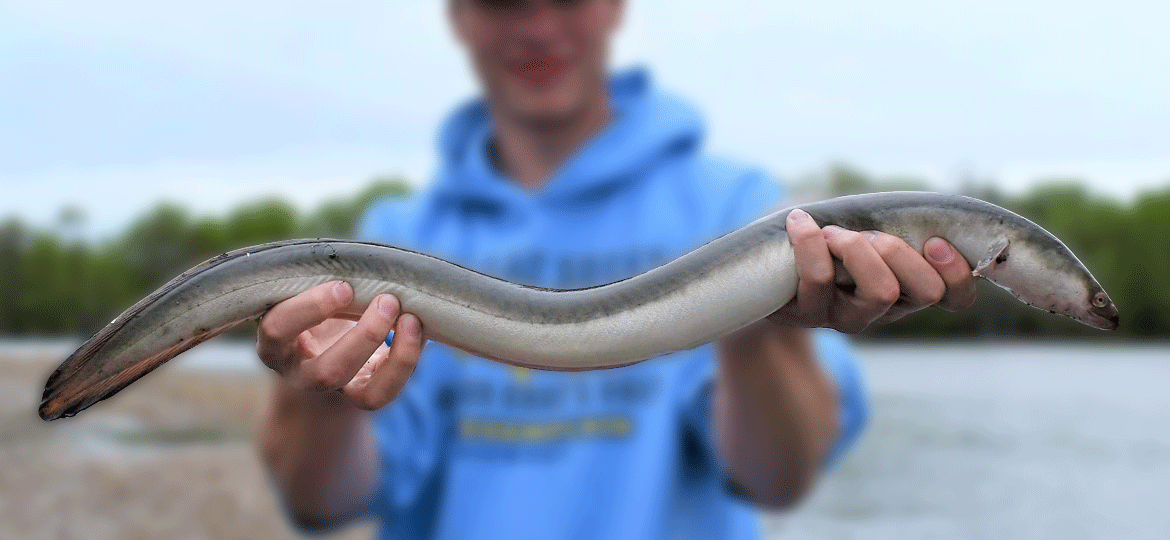
The American eel (Anguilla rostrata) has a narrow, snakelike body with a hinged jaw. Their long dorsal fin combines with the caudal and anal fins to form a singular, long fin. They exhibit gray upper areas fading into a yellow-brown to pale yellow lower body
They can be found in the coastal waters and streams of the Atlantic from Newfoundland to South America. They also inhabit the Great Lakes, Mississippi, and Gulf basins all the way to South Dakota. Eels have been found throughout Vermont in Lake Champlain, Glen Lake, Sunrise Lake, Lake Iroquois, and the Connecticut River Valley.
Their maximum length was reported as 60 inches but they are commonly found in the 30 to 40 inch range. Males will generally only grow to 24 inches. The Vermont record measured at about 45 inches and 6.2 pounds. They can live up to 30 years of age.
Habitat
American eels generally congregate on mud and silt bottoms of water bodies. They can be found at great depths in the bottom of lakes. The larvae live in the Atlantic Ocean.
Reproduction
As a catadromous fish, American eels spend most of their lives in fresh water but spawn in the Atlantic Ocean. Once they reach sexually maturity, they will migrate to the Atlantic Ocean to the Sargasso Sea, an area south of Bermuda and east of the Bahamas. It’s assumed they will congregate in this area during the months of February to April and soon die after spawning.
A single female can deposit up to 20 million eggs that are carried by the ocean current until hatching into transparent young, which will continue to drift toward coastal waters. By the following winter, the 2.5-to-4-inch ribbon-shaped leptocephalie will metamorphose into small adult forms known as “elvers.” These individuals will actively seek shore and the females will move into freshwater rivers, lakes and ponds. Males remain in brackish coastal waters and will only travel short distances up streams.
American eels spend about 10 to15 years of their lives in freshwater, until the begin their journey to the Atlantic.
Diet
While they were originally thought to be scavengers, studies have shown American eels rarely have carrion in their stomach contents. Eels predominantly consume fish, crayfish and insect larvae, and in some cases, mollusks. They spend daylight hours buried under shelter or in the sediment of the bottom, after which they will emerge to feed during the night.
Management
This species does not have a minimum length or daily limit. Work conducted by Vermont Fish & Wildlife staff to help conserve these populations includes, but is not limited to:
- Improving aquatic organism passage.
- Protecting and restoring fish habitat.
- Monitoring local fish communities.
- Engaging in regulatory proceedings, providing direct input to protect aquatic habitats on individual development projects through Act 250, Section 248, Stream Alteration, Dam Safety, hydroelectric relicensing, water withdrawals, etc.
Status
American eels are considered a Species of Greatest Conservation Need in Vermont.
Fun Facts
-
Other common names: eel, freshwater eel, common eel, black eel, silver eel, anguille d Amérique.
-
There is only one population of American eel on earth! Mature eels all meet at the same place in the Atlantic Ocean to spawn each year and the young migrate back into freshwater as they grow.
